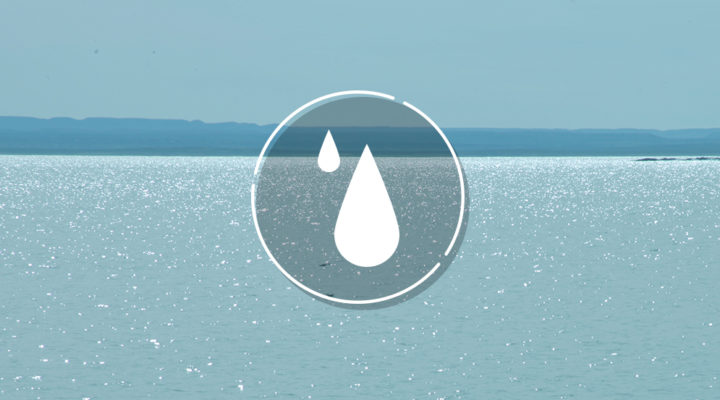WORLD WATER DAY
Plastic pollution of rivers: what we see and what is hidden
CONICET researcher ponders upon Paraná River’s environmental damage caused by plastic waste.
As an essential element for life, water has its own day: the 22nd of March. This date was proposed by the United Nations to draw attention towards the importance of fresh water as a resource and to promote its care and protection. ‘Leaving no one behind’ is this year’s theme.
What can be done to protect the water of rivers and lagoons? How big is the environmental problem caused by plastic pollution? What is the situation of the Paraná River, one of the largest and most abundant rivers of the world? CONICET researcher Martín Blettler at the National Institute of Limnology (INALI, CONICET–UNL) shares some of his knowledge about this issue to stimulate careful thinking and to suggest an appropriate course of action.
Since 2016, studies carried out by Bettler’s research group have shown alarming results: they have found a high level of plastic pollution in the water courses of Paraná, Setúbal Lagoon –near Santa Fe city– and nearby riverbeds. “Bottles and other plastic waste are extremely abundant; nevertheless, as members of society, we don’t see the problem in its complete magnitude and we do not comprehend its full meaning”, said Blettler whose research study estimated an average of almost 100 bottles per kilometer on the river banks.
The researcher believes that much of society does not give the proper importance to plastic contamination because people do not associate plastic with rubbish: “We’ve been working on some postgraduate studies that include, among other topics, interviews with local fishermen”, explained Bettler. “They see pieces of plastic drifting on the river, but don’t perceive them as something negative or of great impact. It seems that contamination is associated mainly with chemical pollution, while floating garbage is a completely different subject”.
What we see and what remains invisible
Scientists have also detected great amounts of microplastic. The action of UV rays and water-sand friction, among other factors, degrade macroplastic; they decompose it and transform it into secondary microplastics: the process of breaking down large plastic material ‒which used to be other elements such as plastic bags, bottles or styrofoam recipients‒ into much smaller (less than 5mm) pieces. This process is also known as fragmentation.
“We have found microplastic in very alarming quantities”, warns Blettler. “We are off the limits compared to other international studies”. Nevertheless, he also admits they have found smaller proportions in other places. “Although the distribution is not homogeneous, in some places we had to count twice because the number was unbelievable: 35,000 particles per square meter”.
“Unfortunately, there is no technology available today to take out microplastic from the environment. With larger plastic debris, we can organize cleaning campaigns or avoid new waste from getting into the water with better solid waste treatments. But today, it’s impossible to remove microplastic from water”.
On the other hand, scientists are also analyzing the impact of this problem over the local biota. “We have found microplastic particles in fish; this means they are eating it. The main negative effects of plastic over the health of fish are intestinal blockage, reproductive problems and general body weakening that makes them more vulnerable to predators”. In addition, the biota may suffer toxic effects due to the release of toxic substances, like pesticides and heavy metals, by some plastics.
The solution to this problem, a shared responsibility
“When we first started to deal with these issues, we realized that the problem required an interdisciplinary approach”, said the Environment Sciences specialist. Pollution by plastic waste is a consequence of the low cost of disposable plastic products and mass consumption. As a result, “social, cultural and economic factors are involved”; it is not only a human health or environmental problem (due to biodiversity loss), but also produces a great impact at a socio-economic level: it damages different sources of wealth, such as tourism and fishing.
“The cultural factor plays a top role from the moment our lifestyle demands more and more plastics. Unfortunately, we are part of a throw-away society. This fact, plus our low environmental commitment and poor waste treatment systems are the reason for the high contamination levels found in our scientific studies.”
From the legal viewpoint, the scientists are working alongside many NGO and public officials with the concept of shared responsibility: “Each time we do works of garbage collection, cleaning or sampling, we keep a record of the different brand names on the product packages we collect. We should all, as society, put pressure on those brands, so that they also assume the shared responsibility for the disposal of these plastic products. If a company is free to choose a specific type of package for its products, it must also partly account for the final destination of that container.”
Bletter said that the Province of Santa Fe is working on a new bill that will include some of these aspects of “shared responsibility”. He and some colleges have been invited to work on it.
Looking to the future
Plastic pollution is a highly visible problem, thus it offers a kind of “advantage”: it is quite easy to raise social awareness about it. “The same products we all consume on a daily basis, we see them later polluting our water courses”, said Blettler summing up. “In this sense, and always as committed scientists, we have had to take new roles as activists through actions of social communication and popular awareness.”
By Jorgelina Martínez Grau
